EVERY TIME we try to come up with an answer, our Jersey hamburger story takes a twist. While there remain many unanswered questions, we are still here to introduce Louis, Abner “Al” A.L, and Webster Bridges, once a family of farmers from Cordele, Georgia, who came to New Jersey and became hamburger royalty.
UPDATE:
The New Jersey Historic Village Keepsake Collection has just released New Jersey’s #1 Hamburger Diner Stand, the White Manna in Hackensack, New Jersey (A Brothers’ Bridges business). Click Here to learn more about how you can get one of these limited-edition wooden art keepsakes.
As with all Mr. Local History retrospectives, we often update the post when we learn stories and are sent photos from our community. We will continue to expand this piece as information becomes available. If you have any stories to share, please post in the comments section at the end of the piece.
Here’s what we’re still looking for:Open questions for our Mr. Local History Sleuths:
Mr. Local History Project – Contact Us
For Hackensack White Manna
• Actual date the Hackensack, NJ White Manna opened in 1946.
• Photo of the Paramount Dining Car Plate (manufacturing plate) from Haledon, NJ
• Photo of the diner at the 1939 World’s Fair
• Any photo with Louis Bridges, first owner of White Manna
• Photo with the walk up window c.1970s
For Jersey City White Mana
• Photo of the diner at the 1939-1940 World’s Fair in Flushing Queens, NY.
• Photo of the Paramount Diner Car Company manufacturer plate
• Photo of the diner AT the 1939 World’s Fair
Our curiosity began when we were preparing a story about the White Diamond hamburger chain that we heard turned 75 in 2022. So we started researching that event. Then that story took a twist when we found a contradiction to that story. What were we missing? As students of history, once that thread was pulled, there was no turning back. This story starts as we found a 1937 advertisement in New Jersey’s The Record Newspaper. The ad was for a restaurant called the “White Diamond” with one establishment in Hackensack and another in Elizabeth, selling a novel hamburger nicknamed “the Slider.” However, what was inconsistent was that these White Diamond diners were there 9 years earlier than the Clark, New Jersey anniversary. We thought, “Wait, wouldn’t that make the White Diamond 84 years old?” Hmmmmm…………
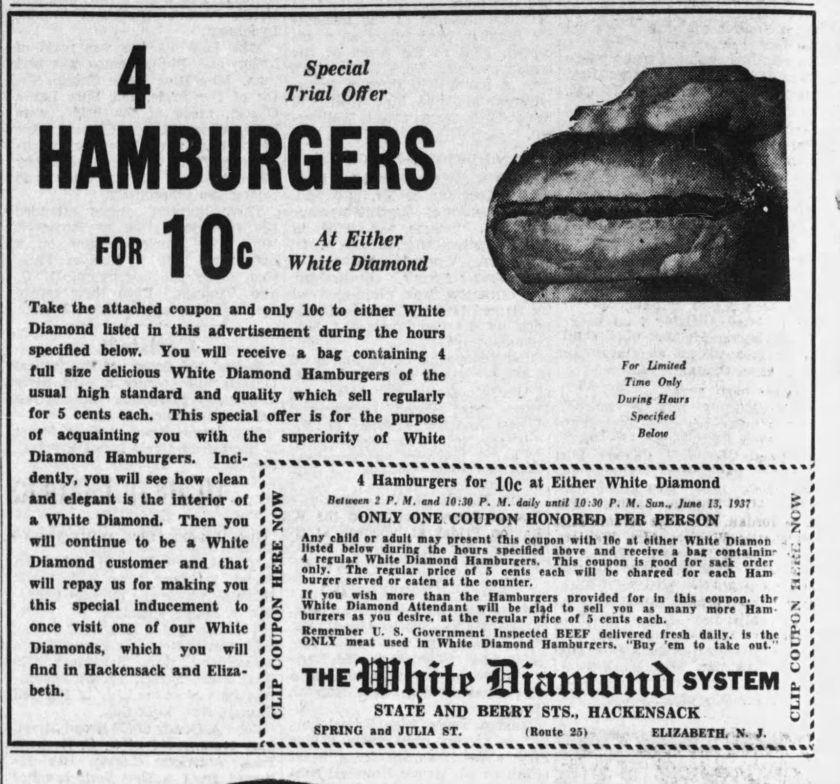
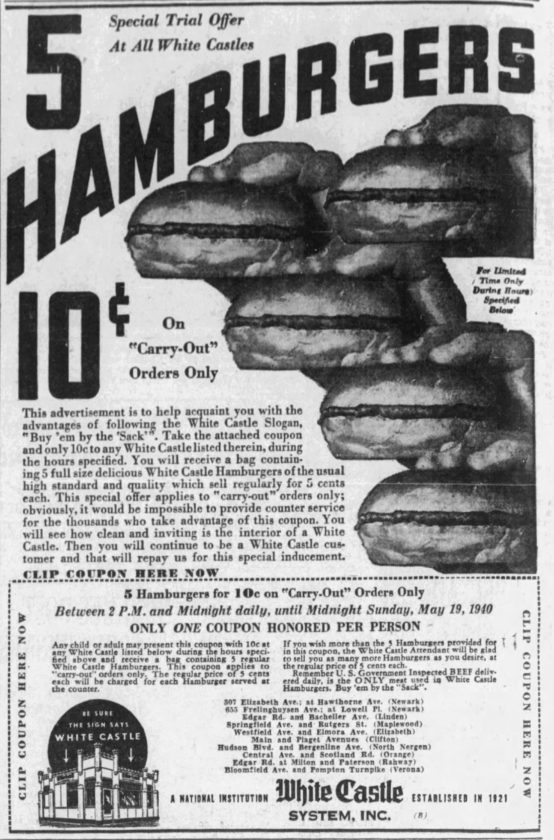
SIDEBAR:
Jersey Hamburger History
The first White Castle in New Jersey opened August 16, 1935 at 9271 John F. Kennedy Blvd, North Bergen, NJ and was the overall ninth location opened by White Castle founder E.W. Ingram. The first White Castle opened in Wichita, Kansas, March 1921.
Many references have noted “the slider” creation to the White Castle burger chain, others believe it also belongs to a person we’ve come to reference as “the Burger King of New Jersey”. We will introduce you to Louis Bridges and the Bridges family, farm boys from Cordele, Georgia (150 miles south of Atlanta) who moved to northern New Jersey and created three of New Jersey’s most iconic burger chains; the White Diamond, White Manna, and yes the one ‘N’ removed White Mana.
Hamburgers at the 1939 World’s Fair
While our White Diamond ad hails from 1937, our research led us back to the 1939 World’s Fair in Flushing, Queens, New York. Anyone who has experienced a World Fair can compare the 1939 fair to something out of Walt Disney’s Land of the Future. One of the futuristic attractions at the fair was the “diner of the future,” an exposition focusing on a dining experience like no other.
The 1939 World’s Fair was the second-most expensive American world fair, exceeded only by St. Louis’s Louisiana Purchase Exposition of 1904. The opening slogan of “Dawn of a New Day,” allowed visitors to take a look at “the world of tomorrow”. Television was demonstrated for the first time. In order to convince skeptical visitors that television sets were not a trick, one set was made with a transparent case so that the internal components could be seen. As part of the exhibit at the RCA pavilion, television sets became available for public purchase at various stores in New York City during this formal introduction at the fair.
Americans were ready for what the World’s Fair coined as “fast food,” synonymous with foods such as hamburgers and hot dogs. Betty Grable’s 5 Cent Hamburger at the World’s Fair article on December 19, 1939 shows actress Betty Grable preparing hamburgers, wearing a chef’s cap and apron. The article reported that high food prices at the New York World’s Fair kept thousands of people away. Most damaging was the rumor that Fair hamburgers were $1.25 each (actually they were $0.05). This article suggested that the Fair publicity department should have sent out pictures such as Grable eating 5-cent hamburgers to counteract the damage done by the rumor. Betty Grable is remembered for starring in the 1939 film “Million Dollar Legs.”
The World’s Fair and WWII
When World War II began four months into the 1939 World’s Fair, many exhibits were affected, especially those displayed in the pavilions of countries under Axis occupation. There were seven fair zones: Amusement Zone – 280 acres, Communications and Business Systems Zone, Community Interests Zone, Food Zone, Government Zone, Production and Distribution Zone, plus the Transportation Zone. The Food Zone showcased American companies’ latest technology and products, featuring many brands still on store shelves today. Taylor Pork Roll was exhibited for the first time as part of the “Taste of Tomorrow” exhibits, noted by acclaimed food, design, and travel writer Mimi Sheraton. Another new marvel of food innovation that caught her eye was the Nabisco Icebox Cake (one of my favorite desserts).
The Paramount Diner Car Experience
Planning for the 1939 World’s Fair started back in 1935. Over the next four years, the World’s Fair Committee planned, built, and organized the fair and its exhibits. The eyes of the Fair were focused “on the future,” not in the sense of peering toward the unknown nor attempting to foretell the events of tomorrow and the shape of things to come, but in the sense of presenting a new and clearer view of today in preparation for tomorrow; a view of the forces and ideas that prevail as well as the machines. The exhibit was called “Building The World of Tomorrow.” Diners and fast food were part of that vision.
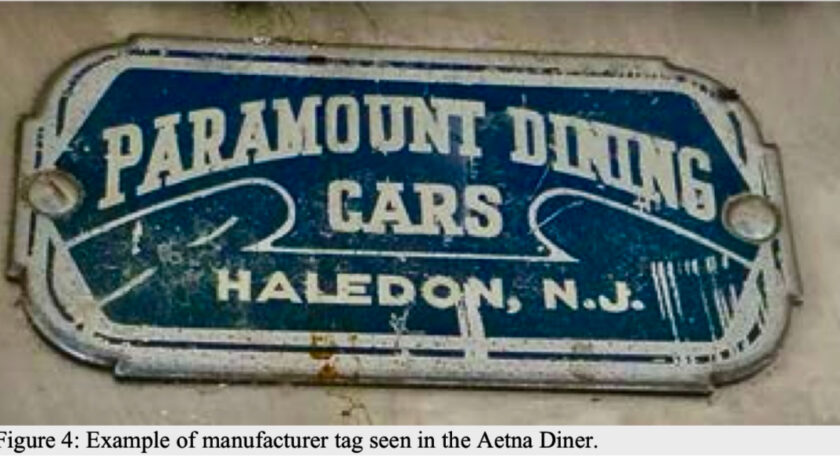
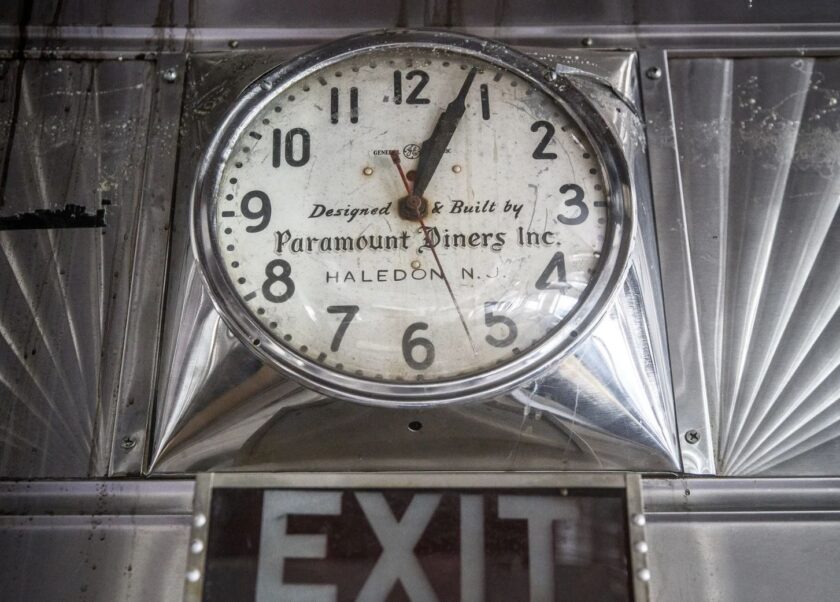
1946 -The Spaceship Looking Diner Lands in Jersey City
The White Manna is the hamburger stand at the World’s Fair, which is located near the Town of Tomorrow. While the “drive-in” hamburger stands took off, designs like the White Manna faltered. After the fair closed in 1940, many exhibits were demolished or removed, including the “Diner of Tomorrow” in the “food zone” that ended up in the hands of Louis Bridges.
However, the most inspiring thing may be the interesting little 5-cent burgers, cooked in front of diners, at the original Diner of the Future.
Here’s where we finally introduce you to Louis Bridges. Louis attended the 1939 World’s Fair and saw something that changed his restaurant approach forever. After seeing the Paramount Diner Experience and the “Dining of the Future” experience, he negotiated with the World’s Fair and the Paramount Diner Car, Inc. of Haledon, New Jersey just north of Paterson, and purchased the exhibit.
The diner design by Arthur Sieber debuted at the 1939 New York World’s Fair. Filed in 1937 and issued in 1938, it was promoted as the “diner of the future” and an “Introduction to Fast Food.” Arthur E. Sieber began Paramount Dining Cars, Inc. in Haledon, NJ, during the Depression after working for years at the nearby Silk City Diner Company. Paramount Diners adopted the use of stainless steel and Formica, a brand of laminate invented in 1913, as an insulating product for its diner surfaces, such as countertops, tabletops, and ceilings. Since 1963, the Paramount Diner Car Inc has been under the helm of Herbert Y. Enyart, who like Sieber had previously worked at Silk City Diners (formerly Paterson Vehicle Company).
“Our White Mana sign originally had two Ns. Coca Cola used to service our signs, and one day they bought it back with one N. They misspelled it and it stuck.” Regardless of its spelling, the name has both biblical and historical references to the affordable food “mana” [sic] in a sanitary “white” establishment during the Depression. The single “n” would stick with future Bridges family diners.
Mario Costa, White Mana owner since 1979 on the “one N” mana in Jersey City –
#notreallytrue (see original photo below)
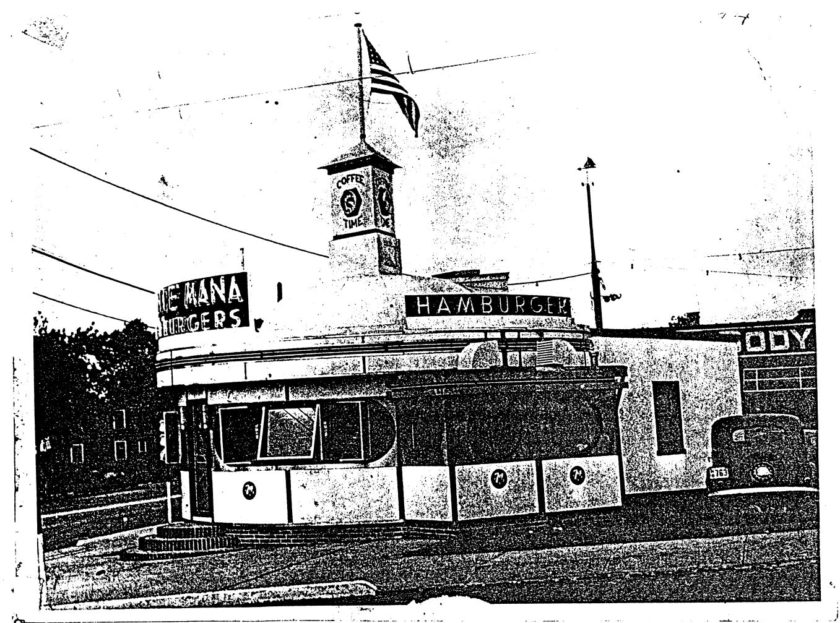
This Paramount diner was dismantled in 1940 and put in storage in two pieces until after WWII. It wasn’t until 1944, that Louis Bridges purchased the diner. Finally, in 1946, a final location was selected at 440 Tonnelle Avenue in Jersey City where the two pieces were assembled. As they say, the rest is pure Jersey history that not only continues today but honors the legacy of burgers at a diner; a state with more diners than anywhere else in the country; New Jersey – the World capital of diners!
The “Diner of the Future” futuristic design was centered around a large grill and circular counter, which meant that the server could cook a burger and hand it to the customer in just three steps. It wasn’t just one of the earliest examples of fast food, but also – according to White Mana’s current owner, Mario Costa – of the slider, so named because the cooks would slide the burgers across the large grill.
Click Images to start the slide show….
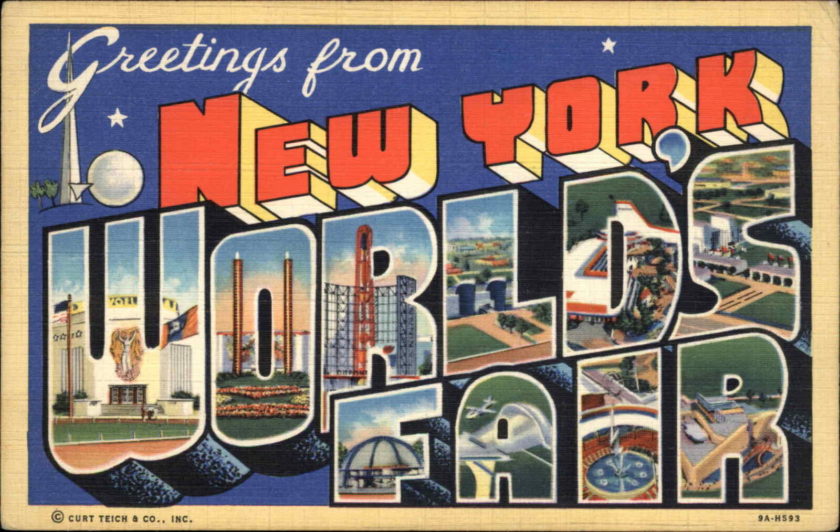
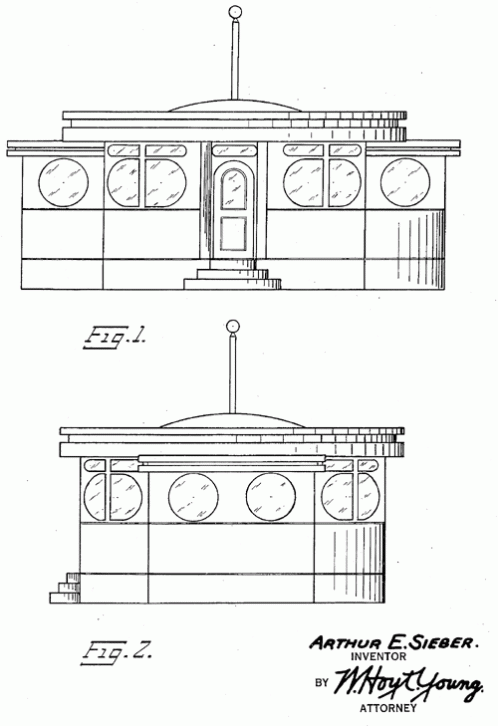
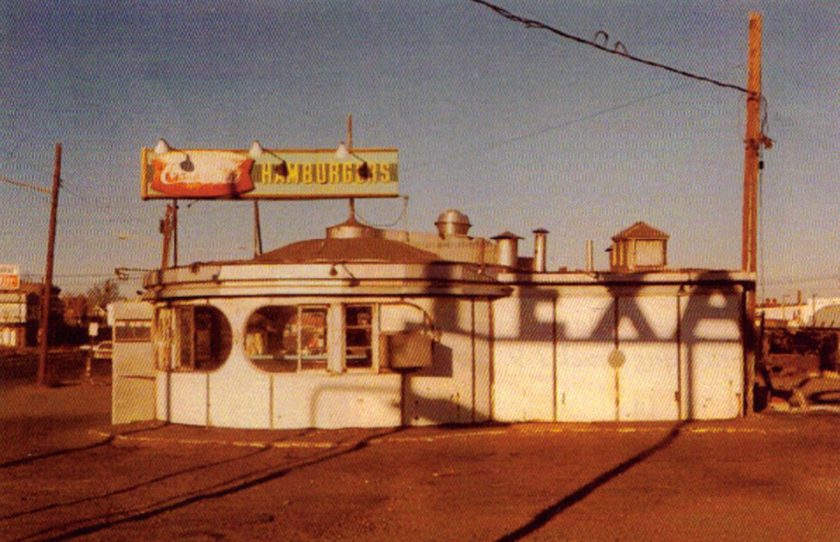
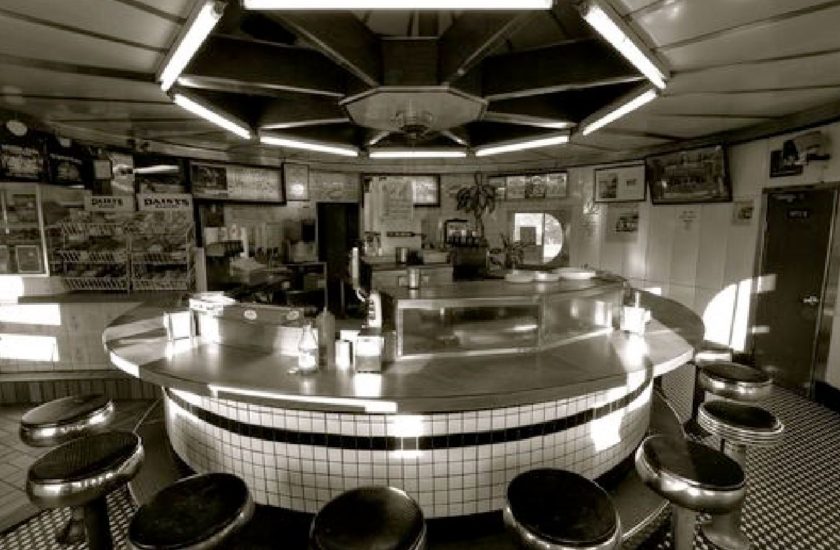
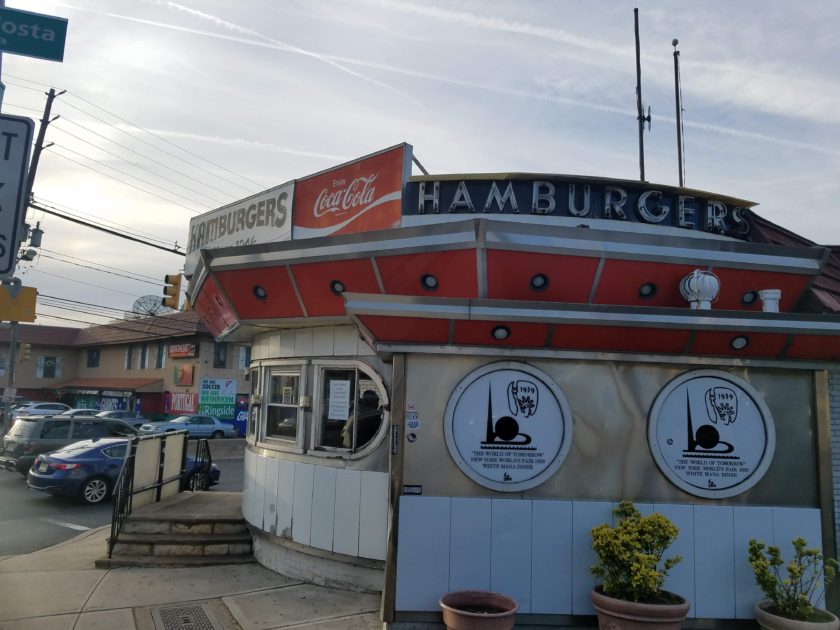
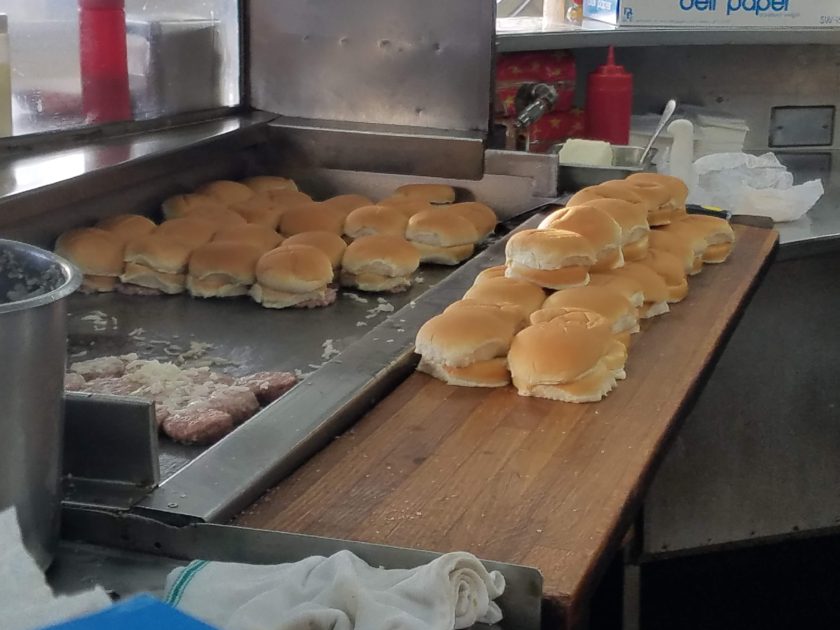
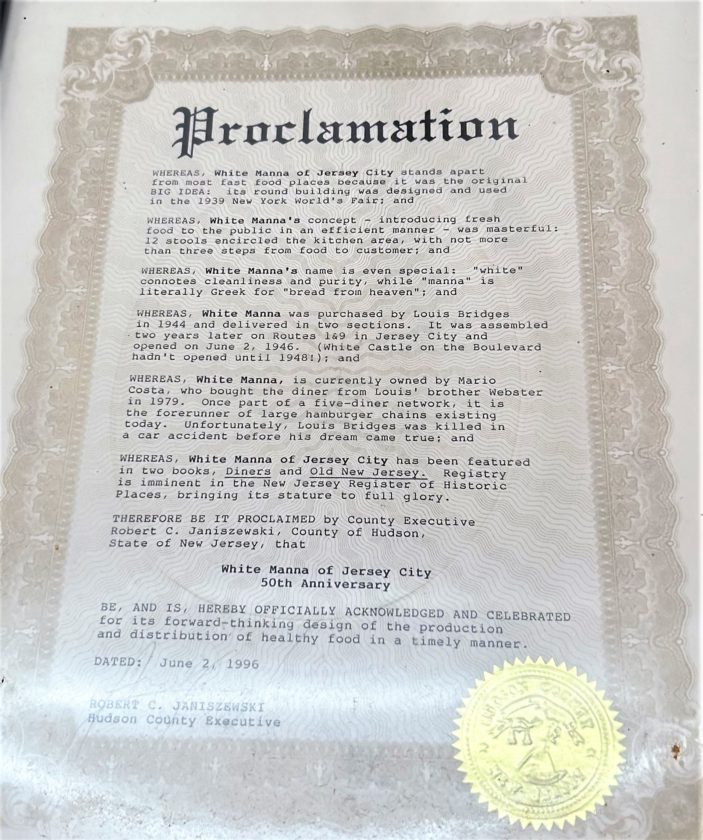
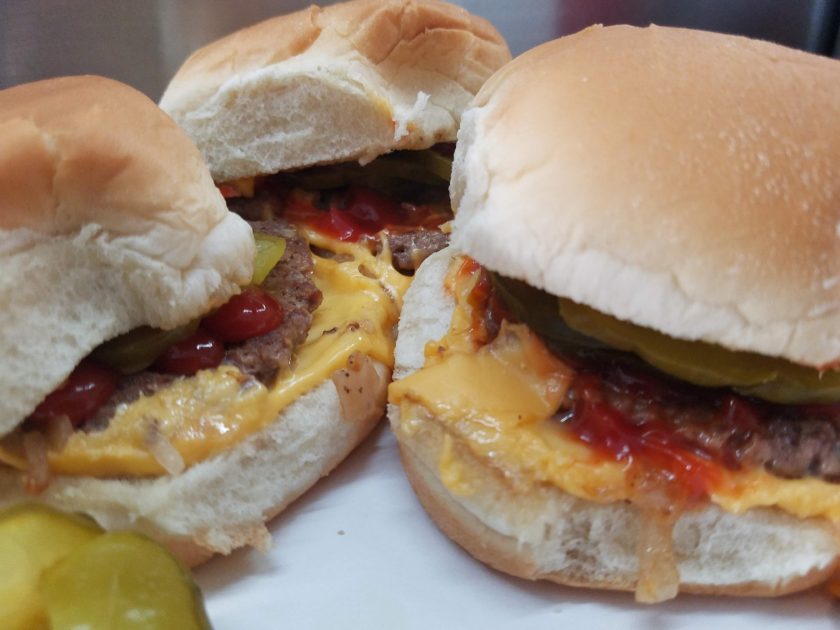
The White Manna – Hackensack
The concept hamburger stand would be designed by Arthur E. Sieber, of Paramount Dining Cars Inc., in Haledon, N. J. Over the years, Sieber would patent a number of unique portable prefabricated, stainless-steel diner concepts where Paramount utilized their patented prefabrication technique to manufacture a diner in three longitudinal sections known as cells, which were individually transported. This construction method was constructed using the “Portable Diner” patent, meaning that despite its large size, it could be manufactured off-site and transported.
Click Images to start the slide show…
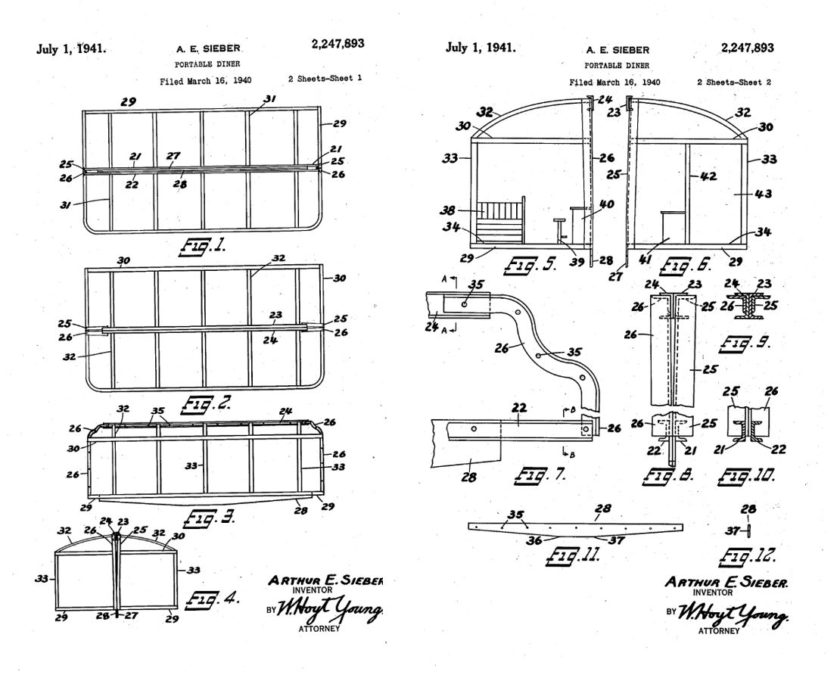
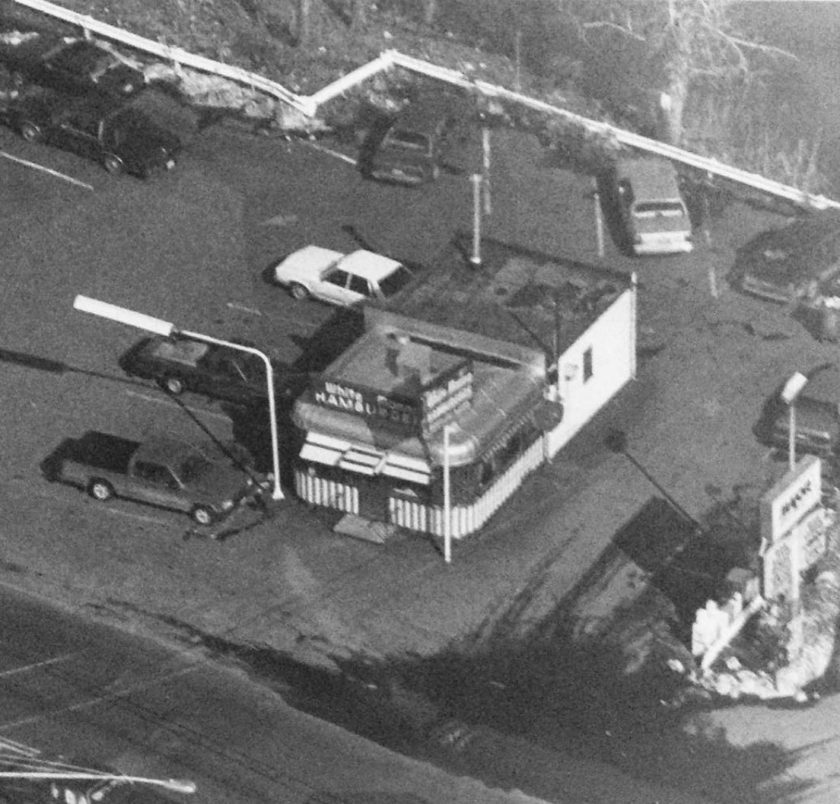
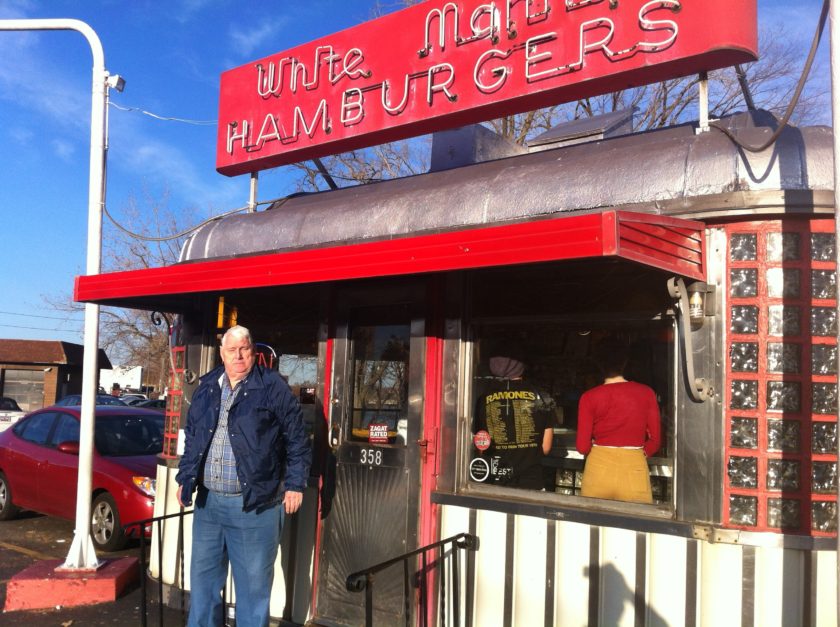
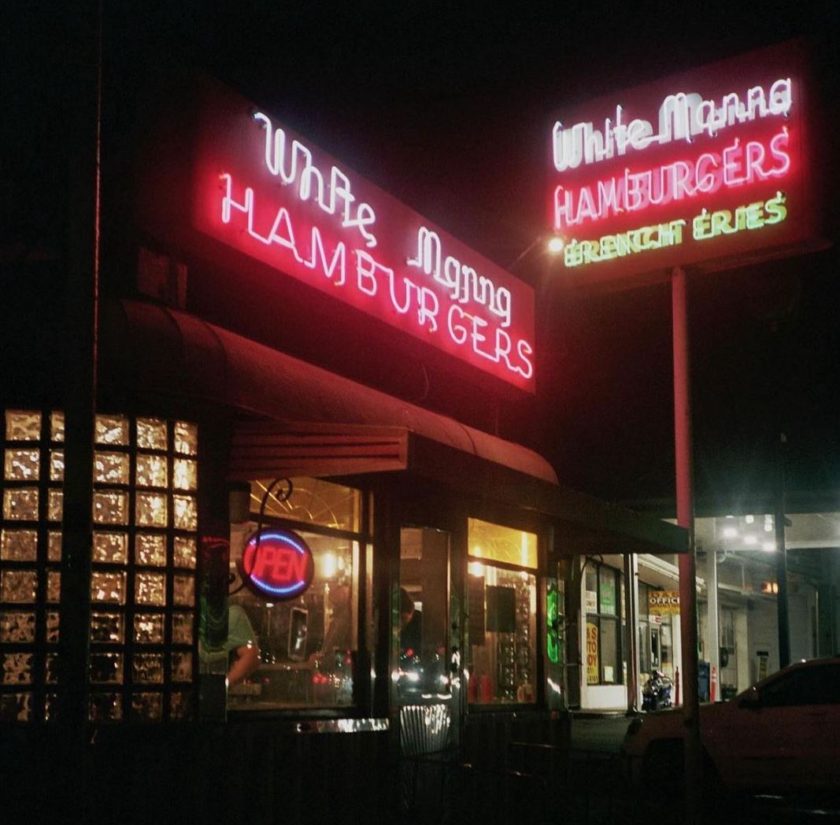
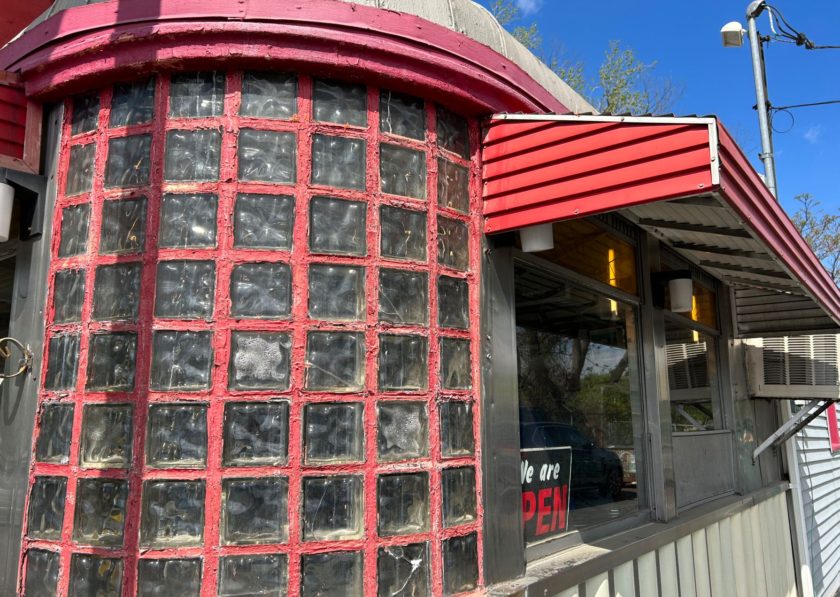
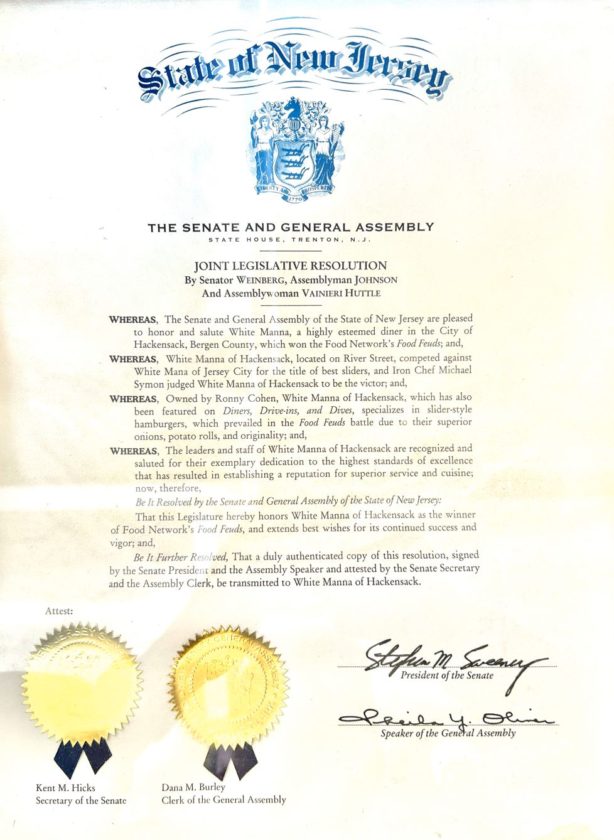
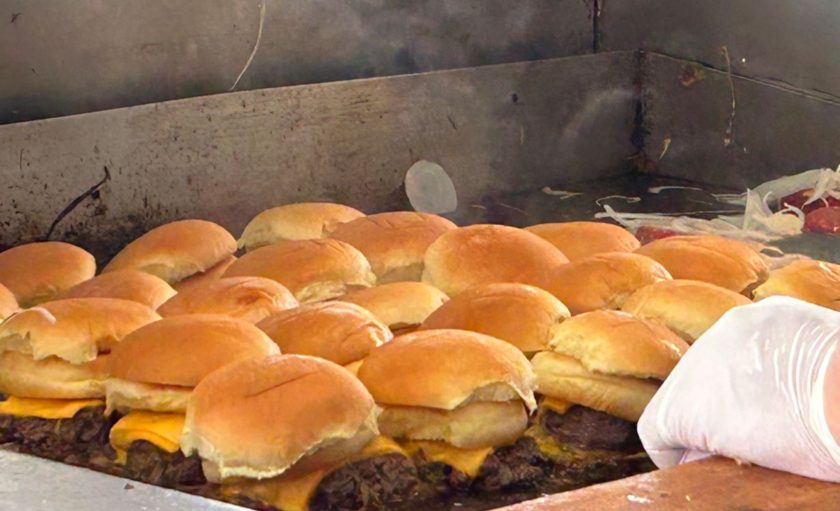
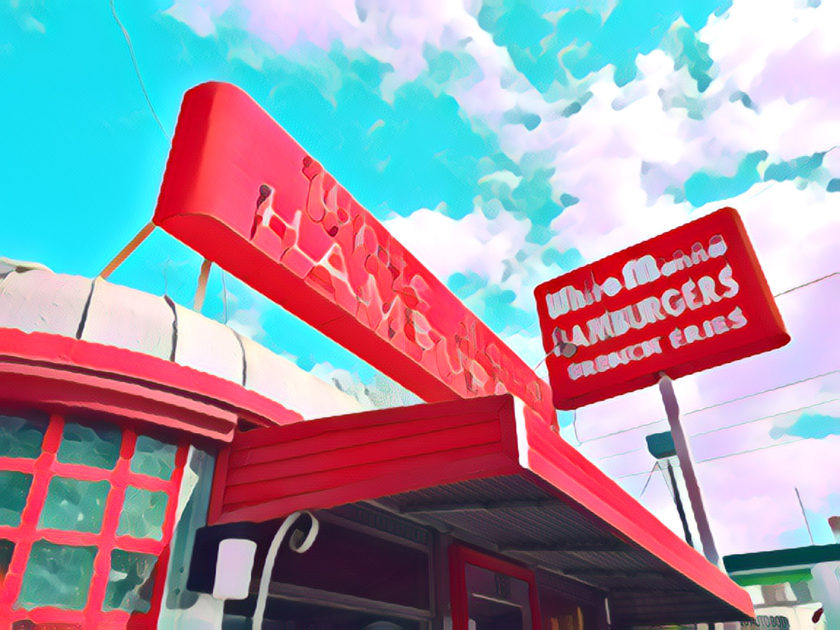
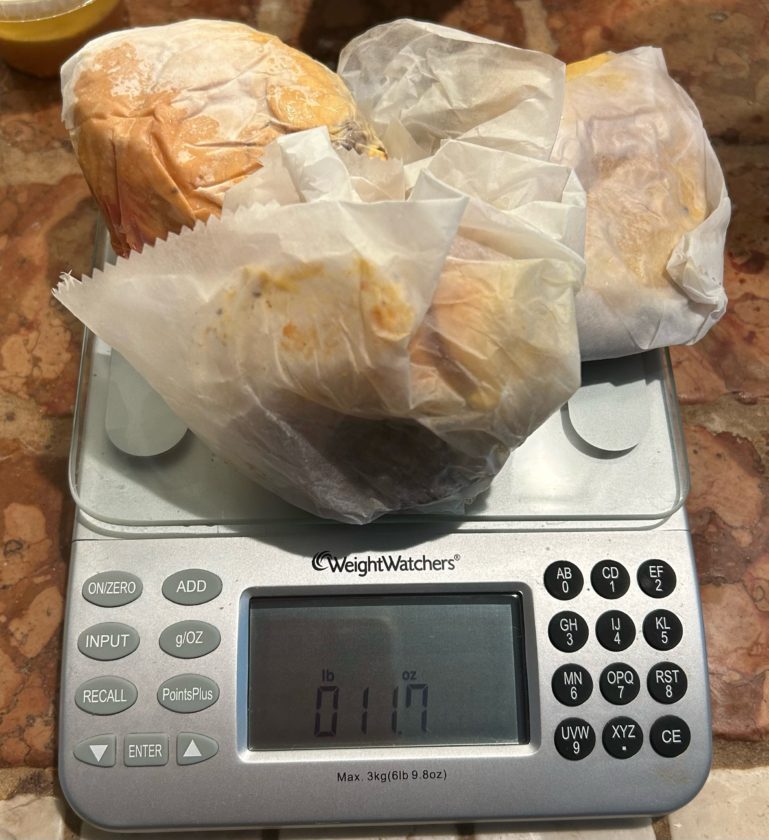
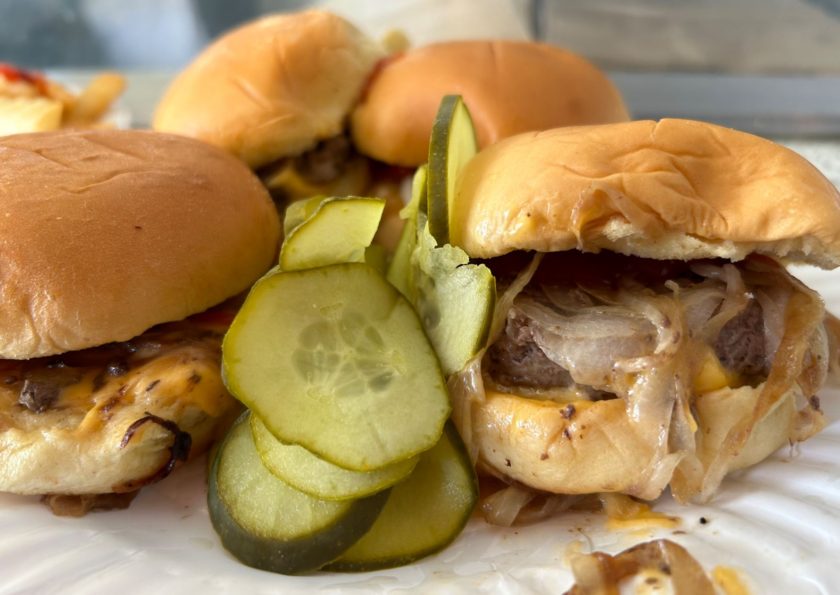
The diner would also be fitted with corner glass blocks and roof shapes, also characteristics of Paramount-made cars. The roof is flat with barrel-style steps along the edges, mimicking mid-century streamlined railroad cars and older diners that traditionally had full-barrel roofs.
Opening Date? 1946 / White Manna, Hackensack, NJ – 358 River St, Hackensack, NJ 07601 – Paramount Diner Car Co. – Louis P. Bridges. Ronny Cohen is the proprietor today. This was the only diner in the series with 2 n’s. This was Bridges’ second Paramount Manna diner.
White Manna – White stands for purity, Manna is, according to the Bible, an edible substance which God provided for the Israelites during their travels in the desert during the 40-year period following the Exodus and prior to the conquest of Canaan.
Definition of a White Manna – See video below.
The Paramount Diner Car Company manufactured the walk-up diner for Louis Bridges in nearby Haledon, NJ. It opened in 1946 in Hackensack, New Jersey. (I am still looking for a photo of the diner plaque that is typically riveted inside each diner.)
The Brothers’ Bridges
Three brothers: Louis, Abner, and Webster Bridges from a cattle ranch and farm in Cordele, Georgia. Here is the Bridges New Jersey Burger Diner Timeline (Still researching):
- 1937 / White Diamond Hackensack, NJ – State & Berry Streets Hackensack – Louis Bridges (see the advertisement for $0.10 burger bag of 4 coupon)
- 1937 / White Diamond Elizabeth, NJ – Spring and Julia Street (Route 25) – Louis Bridges (see advertisement for $0.10 burger bag of 4 coupon)
- 1946 / White Mana Jersey City – 470 Tonnele Ave, Jersey City, NJ – Opened June 2, 1946. “Diner of the Future” Exhibition at 1939 World’s Fair, Queens, NY – Paramount Dining Car Company. Stored in two sections, Louis bought (1944), then landed in JC in 1946. Noted as the “first diner”. After Louis died in 1947, went to Brother Webster Bridges. It was designed so a waiter never had to walk more than 10 feet to get to the grille, cash register, or counter. Purchased by Mario Costa Jr., who had worked at the diner through high school and college, bought the diner for $80,000 in 1979 from Webster Bridges.
- 1946 / White Manna, Hackensack, NJ – 358 River St, Hackensack, NJ 07601 – Paramount Diner Car Co. – Louis P. Bridges/founder. Ronny Cohen, proprietor today. This was the only diner in the series with 2 n’s, and it was Bridges’ second Manna diner.
- 1946 / White Diamond, Springfield, NJ – Morris and Millburn Ave (NE Corner) – Louis Bridges started (date?), Al Bridges took over in 1946 after working at Hackensack WD. (587 Millburn Ave., Short Hills – Walgreens today).
- 1956 / White Mana, Jersey City – 759 Bergen Avenue/Corner Montgomery Street – Opened Saturday, June 7, 1956 – White Mana Milk Bar (Storefront/not diner car) – Al Bridges. (Think might be Metro by T Mobile storefront).
In 1947, Louis Bridges would die in a car accident. The Jersey City and his other diner holdings were transferred to his brothers Walter Bridges and Al Bridges, who at the time were co-owners of the White Diamond Systems, Inc. in Springfield, New Jersey.
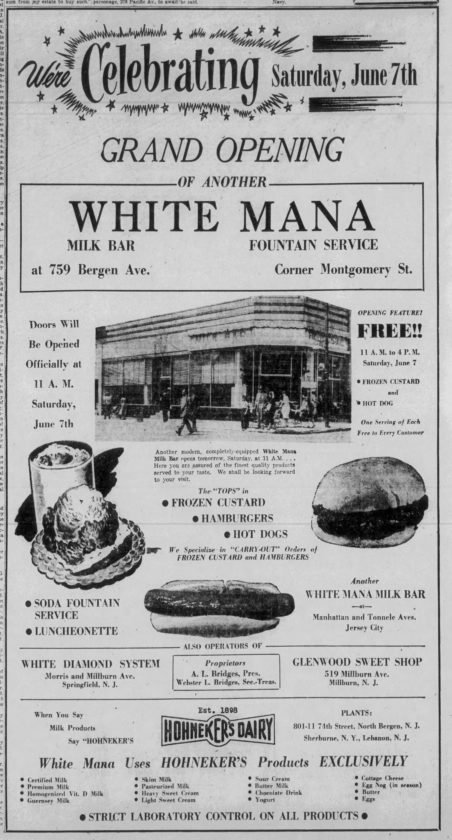
Louis Bridges (Louis Preston Bridges) 1913-1947 (32)
The Bridges Boys’ father was W.E. Bridges of Cordele, Georgia.
Born Cordele, Georgia October 15, 1913. Died on March 4, 1947, at age 32. The 5’11” 220-pounder married Grace Whitney of Palisades Park, New Jersey at the First Baptist Church in Hackensack on Sunday, November 14, 1938. Bridges had been living at 270 Park Street, Hackensack and later moved in 1940 to Ridgefield Park and finally at 65 Bergan Ave, in Ridgefield Park. Louis and Grace had only one son, Louis Preston Bridges, Jr., born in 1945.
We found a car accident report in 1946, Bergen Avenue, Ridgefield Park, New Jersey (1945). Bridges owned both the Hackensack and Jersey City hamburger diner/restaurants. Said to have died in a car accident reported on Tuesday, March 4, 1947. He had been living at 65 Bergen Avenue, Ridgefield Park, NJ about 3 miles south of the Hackensack White Manna. Louis is buried in Cordele, Georgia. At his death, his wife was noted as Sarah E. Bridges. The Jersey City White Mana transferred to his brother Webster after his death.
Abner Bridges (Abner Luther Bridges) (A.L. Bridges or “Al”) 1919-1999 (79)
Born 1919 Cordele, Georgia. Al died in 1999 in Short Hills, New Jersey, at age 79/80. In 1946, Al took over Morris and Milburn Avenue White Diamond. He built his home at 67 Short Hills Avenue, Short Hills, NJ. “Nine restaurants in New Jersey, all staffed by Georgia farm boys.” “If you keep a good, clean place, people will come to eat.” He had a son, Allen Bridges, who took over Springfield restaurant.

Webster Bridges (Webster Lee Bridges) 1920 – 1993 (72)
Born 1920 in Cordele, Georgia. Died 1993, Fort Lee, New Jersey at 72. Wife Evelyn Bridges (1922-2015). Purchased by Mario Costa Jr., who had worked at the Jersey City White Mana through high school and college, bought the diner for $80,000 in 1979 from Louis Bridges’ brother Webster.
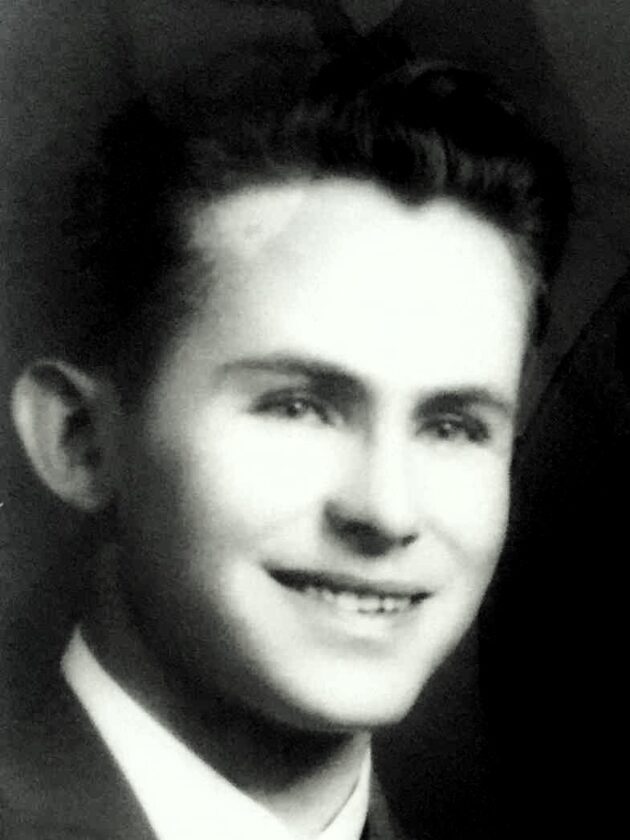

Related Mr. Local History Jersey Foodie Stories
Click Here to see ALL the Mr. Local History Project FOODIE STORIES
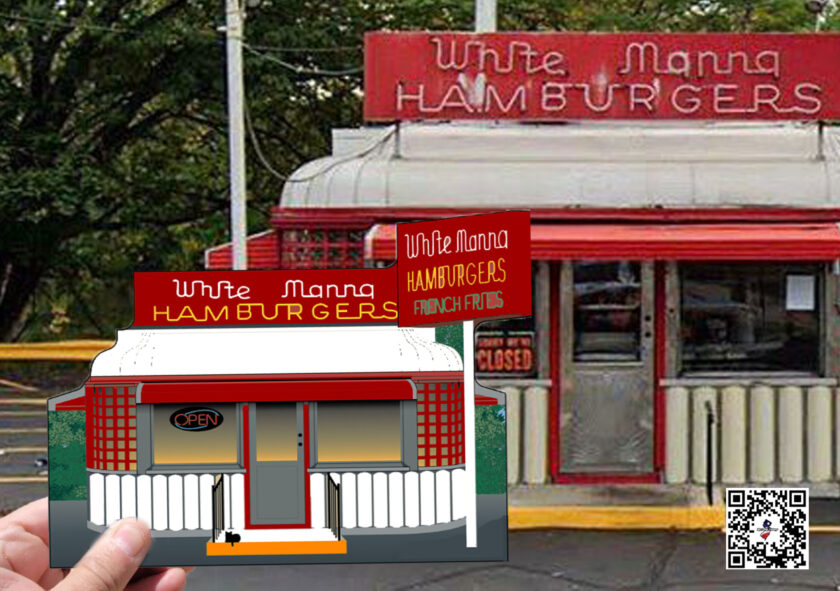
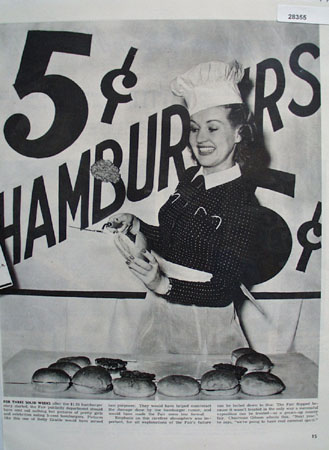

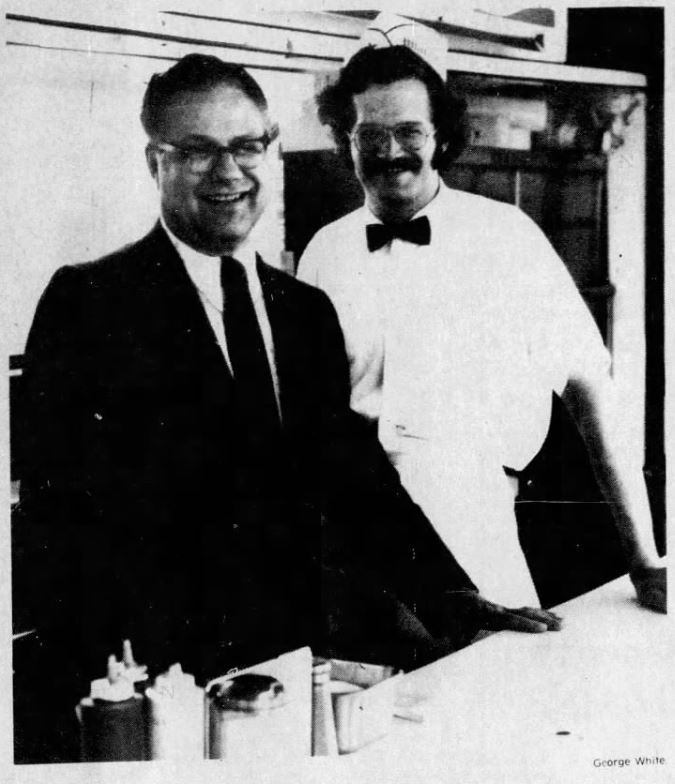

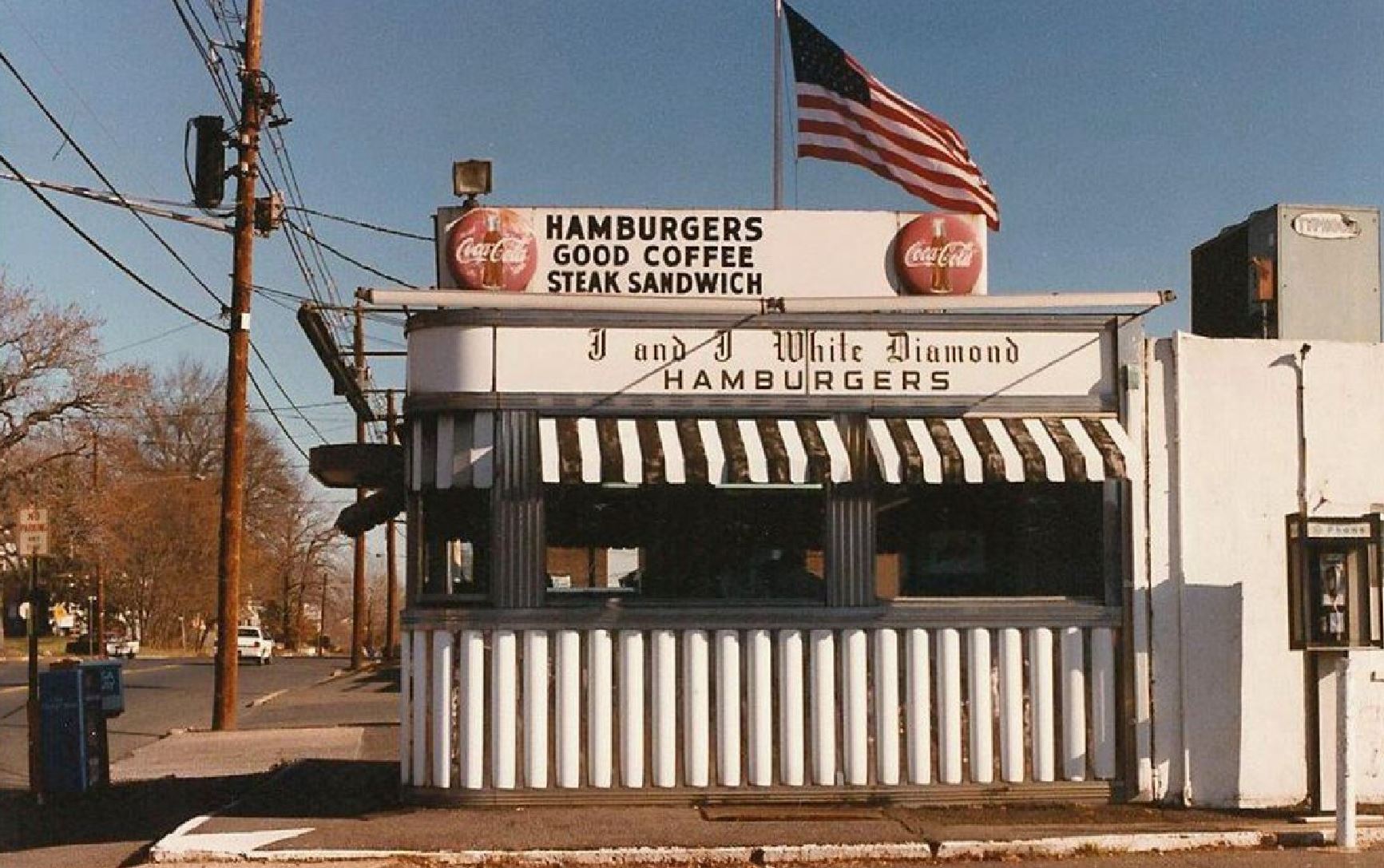
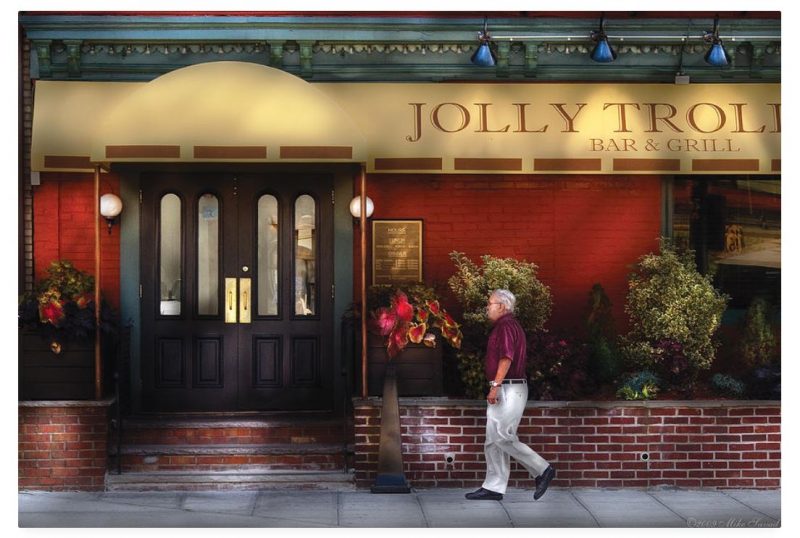
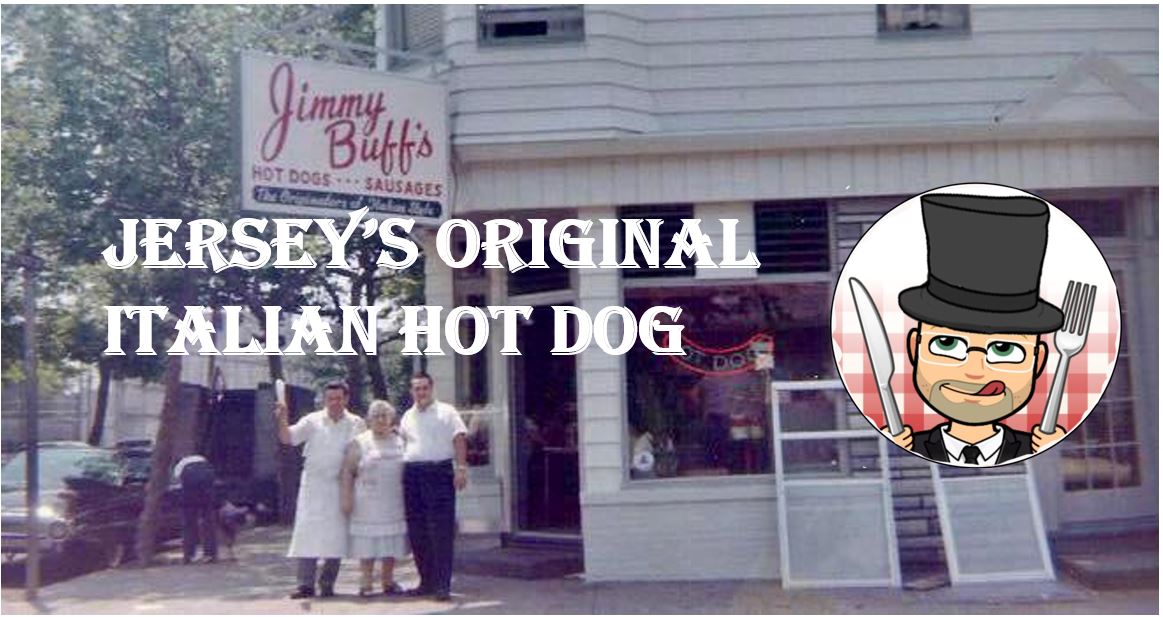
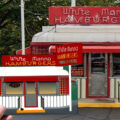
Hey there. Re White Man(n)a at the 1939 World’s Fair: There is simply no documented evidence that it, or any other diner, for that matter, was billed as “The Diner of the Future” in Flushing Meadows in 1939-40. I have been studying and collecting The Fair for several decades now. I want to believe the story as I even took a trip to Jersey City to eat there. But, alias, it’s really very easy: all you need to do is check the guide books, maps, and daily adverts for the Fair. Nowhere is “White Man(n)a” or “Diner of the Future” to be found. It’s certainly possible that it was in operation during the years of The Fair, but it is highly and demonstrably unlikely, virtually impossible, that it was located on the fairgrounds.